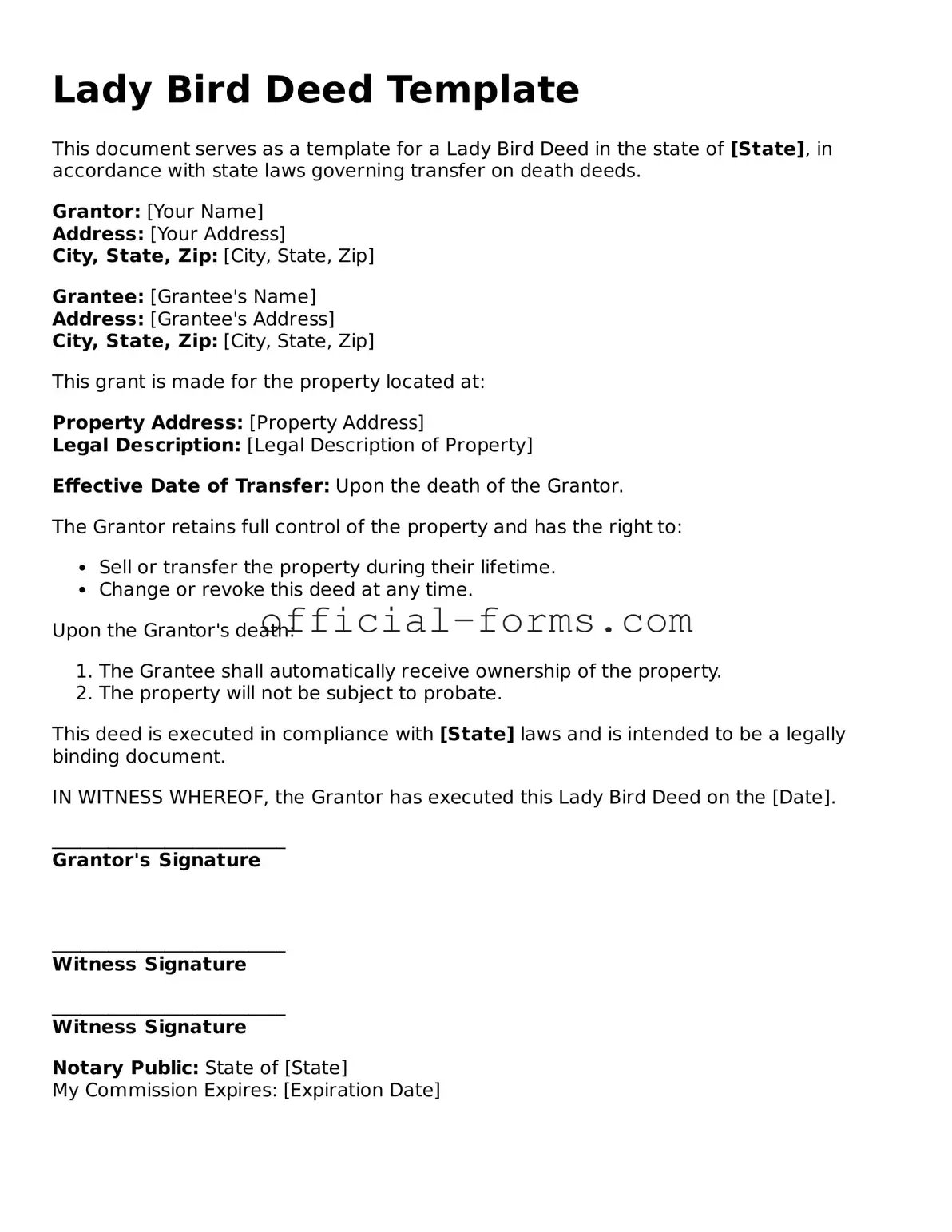Filling out a Lady Bird Deed form can be a straightforward process, but many people encounter pitfalls that can complicate matters. One common mistake is failing to include all necessary parties. It’s essential to ensure that all individuals involved in the property ownership are listed correctly. Omitting a co-owner can lead to disputes or confusion later on.
Another frequent error is not clearly identifying the property. The legal description of the property must be precise. Vague descriptions can create ambiguity, which might result in legal challenges down the line. It’s advisable to refer to the official property deed to avoid any discrepancies.
People often overlook the importance of signing the document properly. All required signatures must be present for the deed to be valid. In some cases, individuals may forget to sign in front of a notary, which is crucial for the document’s legitimacy. Without notarization, the deed may not hold up in court.
Inaccurate dates can also cause issues. It’s vital to ensure that the date of execution is correct. An incorrect date may lead to complications regarding the effective date of the transfer, which can affect tax implications and other legal matters.
Another mistake is neglecting to consider tax implications. Some individuals fill out the form without understanding how the transfer might affect their property taxes. Consulting a tax professional can help clarify these matters, ensuring that there are no surprises after the deed is executed.
People sometimes forget to communicate their intentions clearly. A Lady Bird Deed allows for specific conditions regarding the transfer of property upon death. If the intentions are not articulated well in the deed, it can lead to misunderstandings among heirs. Clear language is key to avoiding future disputes.
Additionally, failing to keep copies of the completed deed is a common oversight. Once the form is filled out and signed, it’s important to retain copies for personal records. This can be invaluable in case any questions or issues arise later.
Lastly, many individuals do not seek professional assistance when needed. While filling out the Lady Bird Deed can be done independently, consulting with an attorney can help navigate complexities. Professional guidance can prevent costly mistakes and ensure that the deed is executed correctly.
